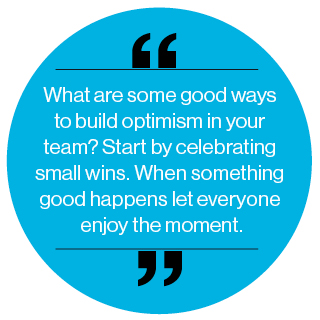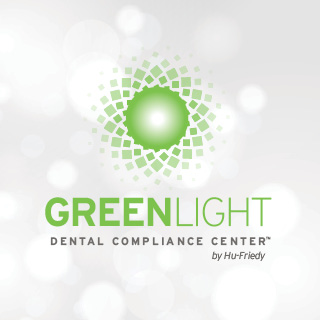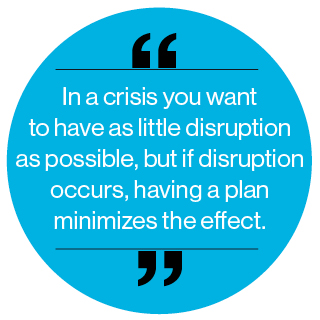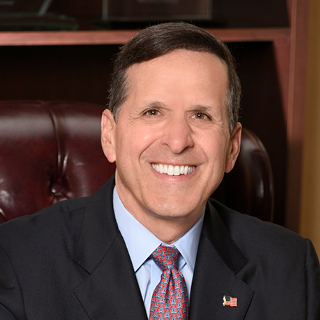Blog
Q&A Part Two: Dr. Roger Levin on Adapting to Our Next Normal

Strategies and Advice for Navigating Changes to Your Practice
We asked Dr. Roger Levin of the Levin Group, dentistry's leading practice management and marketing consulting firm, to join our blog as a guest author for a two-part question-and-answer series exploring the realities of practice management in the COVID-19 world. Check out Part Two below for Roger’s advice for navigating changes to the dental team and proactively communicating with patients.
What impact has COVID-19 had on dental teams? How have they evolved and what more should practices do to stay prepared?
As a rule, dental practice staffing has been relatively stable – until the COVID-19 crisis. We are now seeing the highest level of dental team turnover in history. Historically, many team members stayed employed in the same office for their entire career. Today the statistics are quite different.
According to a recent survey by the Levin Group Data Center, 24% of dental practices had one or more staff member that did not return after the COVID-19 shutdown. Over 30% have experienced turnover in at least one position since reopening. And 33% of practices are operating with a smaller staff than pre-COVID-19.
COVID-19 has changed dental practice staffing for the foreseeable future.
There are new scenarios occurring during COVID-19 that have never occurred before. The following four are happening in practices all over the country, in communities of all shapes and sizes. Understanding them will allow practice owners, office managers, and the whole team to better prepare in advance.

Scenario #1: Staff Resignations
COVID-19 has created fear and uncertainty amongst the dental team. They may have fears or concerns about coronavirus and working in the dental practice. Acknowledging the staff reductions mentioned above, it is reasonable to expect that the number of resignations will start to decline over time as those with the highest level of fear or concern have already made their decision. However, there are others who may not yet be in a position financially to resign from the dental practice or simply not found another job in another field where they feel safer.
Recommendation #1: Be prepared. Have a plan in place for each position. Can another team member temporarily cover the responsibilities of a departing employee? Can the practice work at a smaller staff size and still cover all the necessary job responsibilities? Do you have a written job description on file for every position? Do you have an existing relationship with local temporary staffing agencies that can help fill the position until a permanent individual is identified? All these questions should be asked and answered in advance, allowing the practice to be one step ahead if a team member decides to leave.
Scenario #2: Training and Integrating New Team Members into the Practice
With the level of change occurring in practices it is inevitable that newly hired staff members will need to be brought up to speed to achieve the same level of training and experience as those that have left. There will be a natural learning curve, and it will take time to provide the necessary education on systems and processes within the practice. This will have a direct effect on practice stress, speed, and efficiency.
Recommendation #2: Document and implement the best systems as soon as possible. Scripting is the most important component of most practice systems that involve patient interaction. Training new team members takes time and effort, much of which will be offset if documented systems with step-by-step, script-by-script processes are in place. The better the systems, the better the staff performance, the lower the stress for everyone. This is particularly important for infection control compliance, especially since many states require written protocols. Resources like the GreenLight Dental Compliance Center™ by Hu-Friedy can help teams evaluate current practices and develop an up-to-date program.

Scenario #3: Unpredictability of School Schedules
At the time this was written there is extreme uncertainty regarding school openings and schedules. This uncertainty and unpredictability will heavily influence staffing. Some dental staff are young individuals with school-aged children at home. This means that they must either provide or arrange coverage for their children, ensure that online learning is taking place, handle meals, and all other representative factors. As one staff member recently said to a Levin Group consultant “I didn’t think at this point I would also be the lunch lady.” Parents are scrambling to find ways to manage stay-at-home children and the associated chaos. Some staff members will either resign or need to alter their hours to manage this reality.
Recommendation #3: Have conversations with each affected team member NOW. Will the staff member be able to work a full schedule? Do they have childcare arrangements available if schools close unexpectedly? As many different employees there are in the practice are the number of different childcare coverage situations that will exist. Get a sense of how well-prepared staff members are to handle their childcare needs.
Another alternative is for team members that may have to change their schedules to batch their work. For example, a clinical assistant who has expertise for certain types of cases could have the patients for those cases scheduled in a batch so they can work those specific hours. Insurance filings could be done every second or third day if that is the individual who needs to alter their schedule. And so on.
Scenario #4: A Team Member is Diagnosed with COVID-19
Unfortunately, some doctors or team members may be diagnosed with COVID-19, having potentially exposed other team members and patients. The CDC and ADA both have guidelines for this situation which should be followed. From a practice management standpoint, the impact could range from temporarily replacing the staff member for 14 days or more to the “nuclear option” of having to shut down the entire practice and notify patients.
Recommendation #4: Proactively draft an email to patients who would need to be notified that they were exposed in the practice. Hopefully, you’ll never have to use it. Also, draft an email to send to all patients in the event of a practice shutdown. Again, hopefully it will never have to be used. Finally, deal with replacing the affected team member using the plan you created under recommendation one.
It’s also important to note the impact that this can have on team morale. One of the most important jobs for practice leaders of all stripes is to build and maintain optimism in their team and with their patients. This time of COVID-19 has not been easy for many, and the leader is the one that must rally everyone else and build positivity in the group.
What are some good ways to build optimism in your team? Start by celebrating small wins. When something good happens let everyone enjoy the moment. Many practices have had excellent production since reopening following the shutdown that has lasted for several months. Let the team know how integral they are to making this happen and how much it is appreciated. Let them know that the practice is moving in the right direction, and that although there will still be bumps along the way, things are looking up.
Remember, optimism with integrity, not lip service.
How are patients processing the prospect of returning to the dentist? What are the best ways to keep patients engaged with compelling communications?
Team members aren’t the only ones being affected by COVID-19. Your patients are dealing with unprecedented uncertainty and challenges too. Every practice should communicate with patients in written, email, video, social media, and telephone communications as to how the practice is protecting their health and keeping them safe.

Reinforce in every patient interaction that dentistry has always been on the leading-edge of healthcare practices when it comes to infection control, and that the practice follows all CDC, ADA, OSHA, and state health department guidelines. Use obvious examples such as visible PPE and packaged, sterilized instruments, but also remember to emphasize the “behind the scenes” steps you take that play a critical role in preventing the spread of all diseases, not just COVID-19. Things like your HVE system and your sterilization area. You should even point out that it is someone’s explicit job in your practice to oversee strict sterilization protocols.
All these steps will give patients confidence that the practice has taken the necessary action to protect them. This sample patient letter from an actual practice is focused specifically on reopening but provides a great example of how to clearly communicate visible and behind-the-scene changes to your practice.
The Next Normal
COVID-19 is a game changer, at least for now. The dental team, often through no fault of their own, has been sent into a tailspin. Some staff members will not be concerned or affected at all, and others will have to confront legitimate fears or face immense life challenges. Practices need to be prepared now for different scenarios that might occur that could influence the short- and long-term production of the practice. In a crisis you want to have as little disruption as possible, but if disruption occurs, having a plan minimizes the effect.
It is also important to recognize that many patients will have a very different view of going to the dentist. Fortunately, all the current data indicates that most patients are happy to return to the dental practice and intend to continue with regular preventive visits. Practices that are proactive will have even better performance.
Revisit Part One of this Blog Post

About Roger Levin, DDS
Dr. Roger P. Levin is the CEO of Levin Group, a leading dental management consulting firm. Founded in 1985, Levin Group has worked with over 30,000 dental practices. Dr. Levin is one of the most sought-after educators in dentistry and is a leading authority on dental practice success and sustainable growth. Through extensive research and cutting-edge innovation, Dr. Levin is a recognized expert on propelling practices into the top 10 percent. He has authored 65 books and over 4,000 articles on dental practice management and marketing.
All company and product names are trademarks of Hu-Friedy Mfg. Co., LLC its affiliates or related companies, unless otherwise noted.

